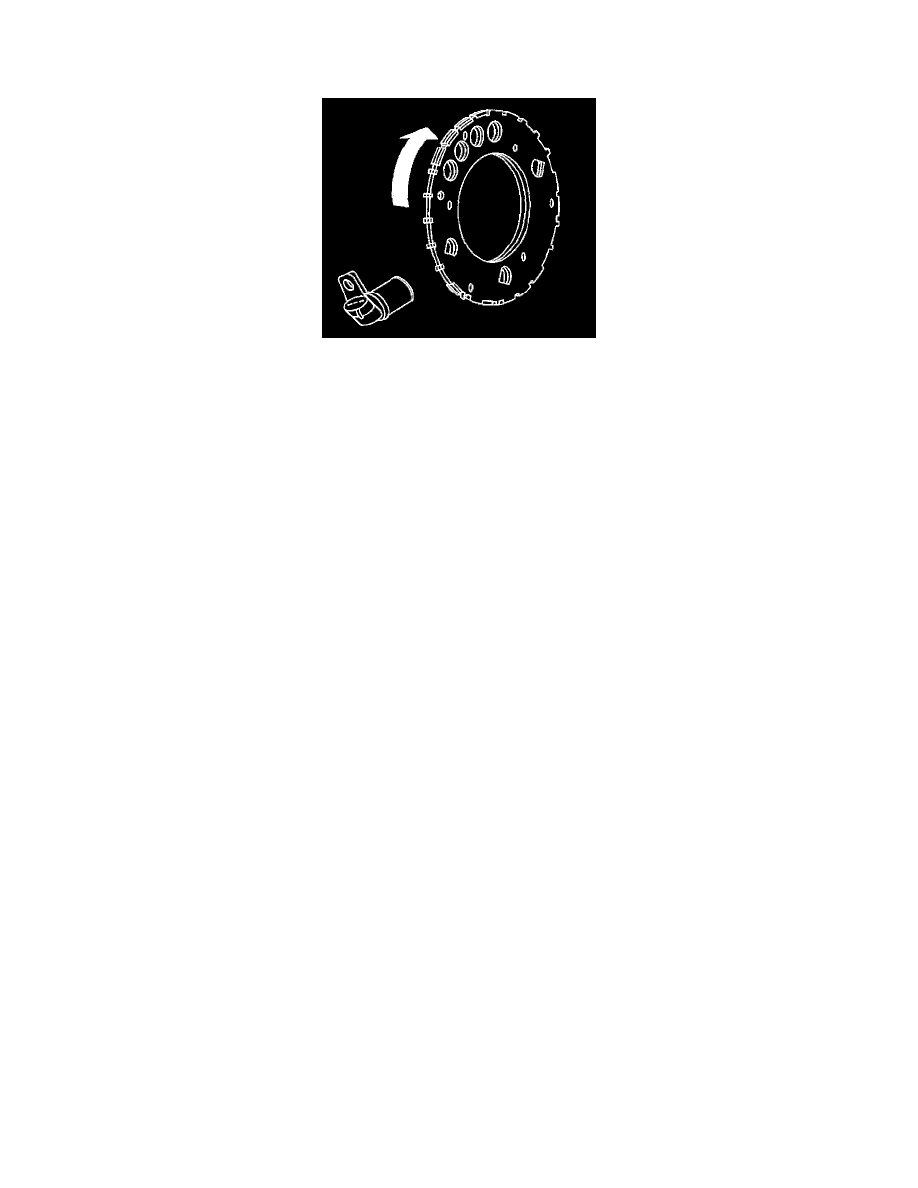Corvette V8-5.7L VIN G (1997)

Crankshaft Position Sensor: Description and Operation
Crankshaft Position (CKP) Sensor and Reluctor Wheel
DESCRIPTION
The Crankshaft Position (CKP) sensor is located in the right rear of the engine, behind the starter. The CKP sensor is a dual magneto resistive type
sensor. This sensor is not speed dependent. The dual micro switches monitor both notches of the reluctor wheel for greater accuracy. The CKP sensor
works in-conjunction with a 24X reluctor wheel. The reluctor wheel is mounted on the rear of the crankshaft. The 24X reluctor wheel uses two
different width notches that are 15 degrees apart. This Pulse Width Encoded pattern allows cylinder position identification within 90 degrees of
crankshaft rotation. In some cases, cylinder identification can be located in 45 degrees of crankshaft rotation. This reluctor wheel also has dual track
notches that are 180 degrees out of phase. The dual track design allows for quicker starts and accuracy.
OPERATION
The PCM also receives a 4X signal from the Crankshaft Position sensor. The PCM utilizes the 4X signal for the following:
^
Misfire
^
Tachometer output
^
Spark control
^
Fuel control
^
Certain diagnostics
The CKP signal must be available for the engine to start. The CMP signal is not needed to start and operate the engine. The PCM can determine when
a particular cylinder is on either a firing or exhaust stroke by the 24X signal. The CMP sensor is to determine what stroke the engine is on. The system
will attempt synchronized and look for an increase in the MAF signal. An increase in the MAF signal indicates the engine has started. If the PCM does
not detect an increase in the MAF signal, a re-sync will occur to the opposite cam position. A slightly longer cranking time may be a symptom of this
condition.
